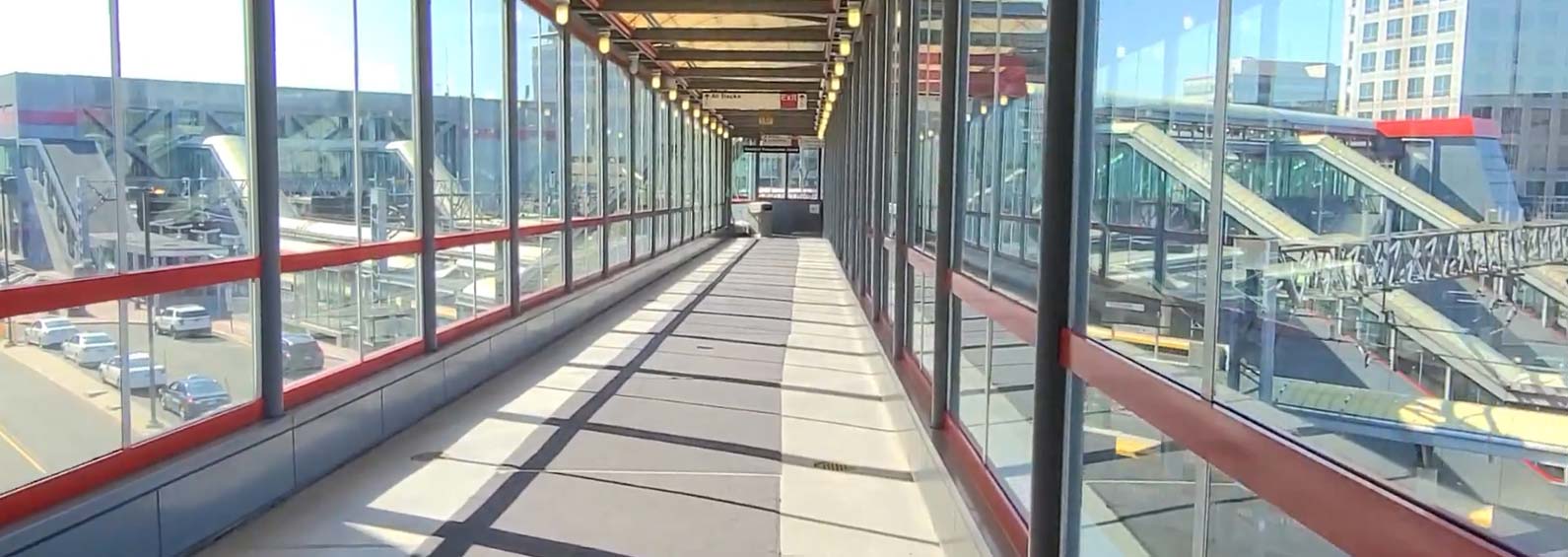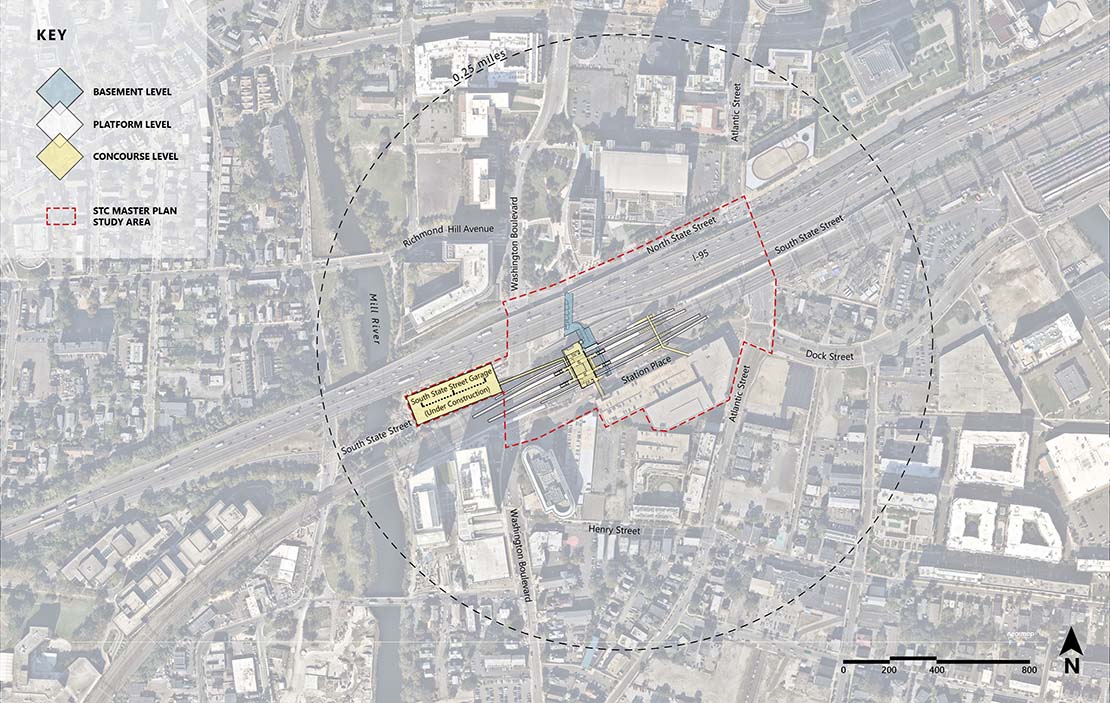
STC pedestrian bridge between the parking garage and station platforms.
STC Master Plan Process
Over the years the Connecticut Department of Transportation and the City of Stamford have conducted a number of planning studies concerning the Stamford Transportation Center (STC) and the surrounding area. The STC Master Plan will provide a path to advance improvements to the STC to transform it into a best-in-class passenger facility. The STC Master Plan study area is bounded by North State Street, Washington Boulevard (including the new parking garage now underway), Station Place (including the original footprint of the existing station parking garage), and Atlantic Street, as outlined in red in the map below. Any improvements proposed from the STC Master Plan will be limited to this area.
While the STC Master Plan is being led by the Connecticut Department of Transportation, the STC's owner, a number of key stakeholders are participating in the plan's development. The Stamford Transportation Advocacy Team (STAT) meets regularly and includes a broad group of stakeholders to discuss findings and provide input on the development and recommendations of the STC Master Plan. STAT members include Stamford Partnership, People's United Bank, Charter Communications, University of Connecticut, People Friendly Stamford, Stamford Downtown, Stamford Hospital, Waterside/NRZ, and the City of Stamford. The STAT continues to meet through the completion of the STC Master Plan.
The STC Master Plan is being developed over four steps, which are:
- Identify Issues and Opportunities
- Establish a Transformative Vision
- Propose Concept Plans
- Develop the Final Plan
Each of these steps includes a number of activities as described below:
Step 1:
Identify Issues and Opportunities
The Department's project team began the STC Master Plan by reviewing a number of previous studies and plans conducted by the Department, the City of Stamford, and the Western Connecticut Council of Governments (WestCOG). The project team met with the transportation agencies serving the STC and other stakeholders to obtain their perspectives on the current operations of the STC and their future plans for using the facility. The Department then conducted a survey of existing customers of the STC to gain their opinions on the conditions of the STC and what improvements are the most important to them. The team also reviewed five comparable state-of-the-art intermodal facilities, including Bradley International Airport (Connecticut), Anaheim Regional Transportation Intermodal Center (California), Raleigh Union Station (North Carolina), Denver Union Station (Colorado), and Moynihan Train Hall at Penn Station (New York). These projects provided best practice guidance for use in developing the transformative vision for the STC.
Step 2:
Establish a Transformative Vision
Once an assessment of the existing conditions of the STC and surrounding area is complete, efforts will focus on developing a vision for the STC. This transformative vision for the STC and Station Place will be developed from the team's recommendations for the different elements of the facility and adjacent areas, including traffic and station area roads, pedestrian paths of travel, customer waiting areas, wayfinding, bus and shuttle operations, transportation network companies (such as Uber and Lyft) and taxi service. The overarching goal for the STC is to transform the station into a single, unified multimodal facility that is both dynamic and modern. Therefore, the vision will aim to create a more engaging, convenient, safe, and aesthetically pleasing multimodal customer experience.
Step 3:
Propose Concept Plans
The transformative vision will guide the development of concept plans for the STC and Station Place. These concepts will be shared with the stakeholders and public through a future public meeting and customer survey. Stakeholders and the public will be asked to share their opinions on the concepts, elements of which will be incorporated into the final STC Master Plan.
Step 4:
Develop the Final Plan
The final STC Master Plan will incorporate all of the work from the previous steps. It will incorporate findings, conceptual design improvements and recommendations, and order of magnitude conceptual level cost estimates. The plan will then guide the Department's future investments in the STC to realize its transformation into a best-in-class intermodal facility.

